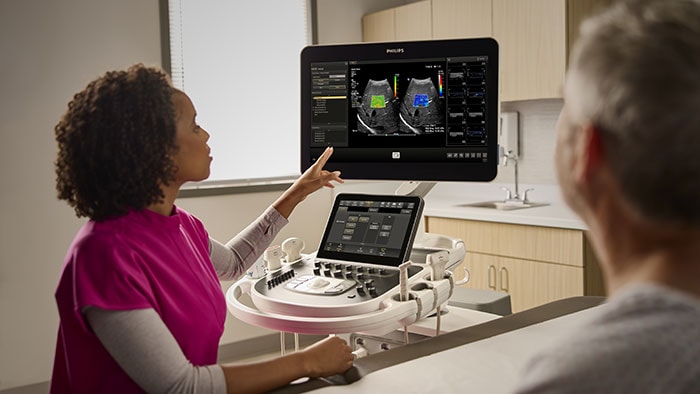In the realm of medical imaging, accuracy and efficiency are paramount. As healthcare professionals increasingly rely on sophisticated technologies to enhance patient care and diagnostic capabilities, addressing automation errors becomes crucial. The integration of artificial intelligence (AI) into systems like Philips’ EPIQ Elite and Affiniti models underscores the importance of resolving challenges associated with these advanced tools. Understanding common automation-related issues and effectively troubleshooting them can significantly improve workflow efficiency, patient outcomes, and overall return on investment (ROI) for healthcare systems.
One of the most prevalent issues faced by medical imaging professionals revolves around error rates in automated systems. These can manifest as incorrect image acquisition, misinterpretation of data, or connectivity issues between different systems. A typical scenario may involve AI software misreading a patient’s images due to inconsistencies in setup or user errors during the examination process. Such misinterpretations can lead to delayed diagnoses, impacting patient care and leading to regulatory repercussions for healthcare providers.
To address these automation errors, the first step is to ensure that the ultrasound machines are correctly configured. Improper setup can result in inaccurate imaging. Medical staff should follow a standard protocol for patient preparation and equipment calibration, ensuring that all transducers are appropriately selected for the specific scan. Regular training sessions can help staff become familiar with these protocols, reducing the likelihood of human error during procedures.
Another common automation issue arises from API rate limits, particularly when multiple users are accessing the system simultaneously or integrating with other platforms. These limitations can result in delayed image processing and hinder timely diagnoses. To mitigate this risk, healthcare facilities can implement user management systems to control access and distribute workload effectively. Additionally, using cloud-based solutions for image storage and processing can improve flexibility and scalability, reducing the chances of reaching API limits.
Integration issues can also pose a significant challenge, particularly when new technologies are adopted. Combining different systems requires a deep understanding of data interoperability. If two systems cannot effectively communicate, critical information may be lost or mismanaged, impacting the quality of care. To tackle integration problems, it is important to conduct thorough compatibility testing before fully implementing new solutions. Establishing a clear data management strategy and consulting with IT experts can also facilitate smoother integration processes, ensuring that all systems work harmoniously.
When examinations do not produce the expected results, or there are discrepancies in data, having a structured troubleshooting methodology is vital. For instance, when abnormalities arise, medical staff should start by reviewing the data input to confirm that all configurations and parameters have been set correctly. Subsequently, running diagnostic checks on the equipment can identify any technical malfunctions. Keeping a log of past incidents can also help identify patterns that may indicate larger systemic issues and guide remedial strategies.
Ultimately, the ability to quickly resolve errors in automation systems is not merely about maintaining workflow efficiency; it holds significant implications for patient safety and institutional reputation. Delays or inaccuracies in imaging can compromise patient trust and lead to potential litigation, creating lasting financial repercussions. Moreover, effectively addressing these challenges can facilitate improved operational indicators, such as reduced turnaround times for imaging, enhanced patient satisfaction scores, and decreased costs associated with re-examinations and consultations.
Implementing proactive monitoring solutions, such as Philips’ new Elevate Release, can further streamline troubleshooting. Proactive monitoring allows for real-time system checks and notifications, enabling staff to identify potential issues before they escalate into larger problems. Expanding virtual access capabilities through platforms like Collaboration Live offers remote consulting and troubleshooting, bridging the gap between healthcare teams and improving response times for image assessments.
The risks associated with not addressing errors swiftly can be significant. Aside from the immediate effects on patient care, there is the broader concern of regulatory compliance within the healthcare sector. Stakeholders should prioritize a culture of continuous improvement and training, focusing on integrating new technologies to address existing gaps in imaging quality and workflow processes.
Healthcare facilities that effectively tackle automation errors can expect to see a substantial ROI. Improved imaging accuracy leads directly to better patient outcomes and more efficient operations, which can elevate a facility’s reputation and attract more patients. When clinical staff can confidently rely on their imaging systems, it fosters a collaborative environment focused on delivering exemplary patient care.
In conclusion, the reliability of automation in medical imaging hinges on addressing common issues with sufficient rigor and foresight. By following structured troubleshooting protocols, leveraging new technologies, and promoting continuous team education, healthcare leaders can mitigate automation errors and enhance patient safety and operational efficiency.
FlowMind AI Insight: Streamlining automation error resolution fosters not only a more efficient workflow but also a culture of trust and confidence among healthcare professionals. By investing in training and proactive technologies, facilities can significantly enhance patient care and institutional performance.
Original article: Read here
2025-02-14 08:00:00

